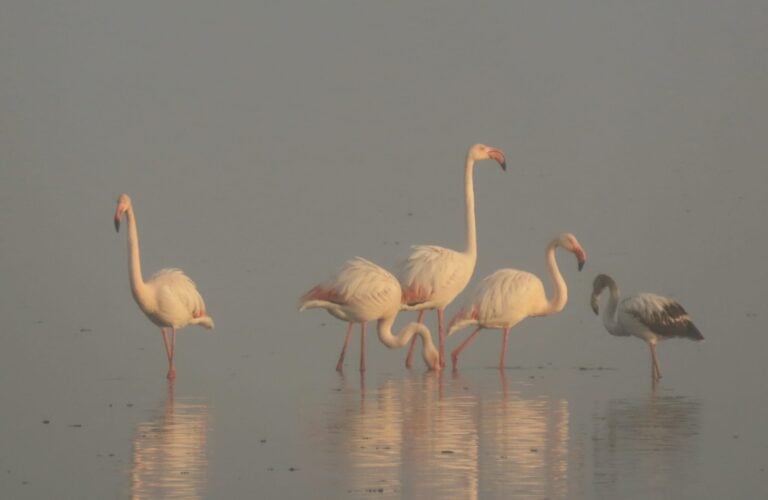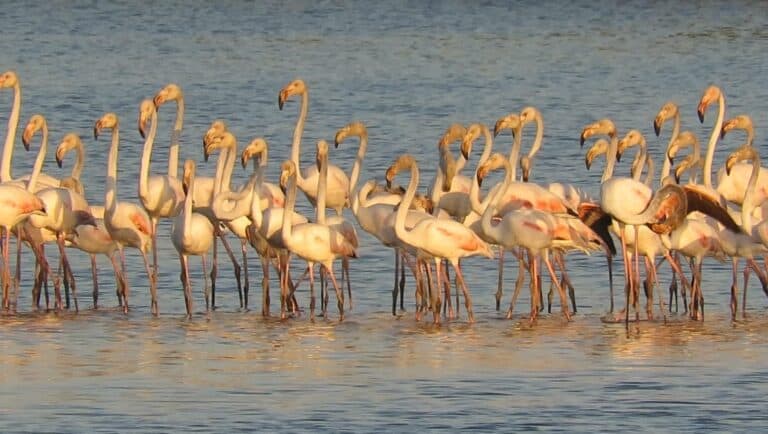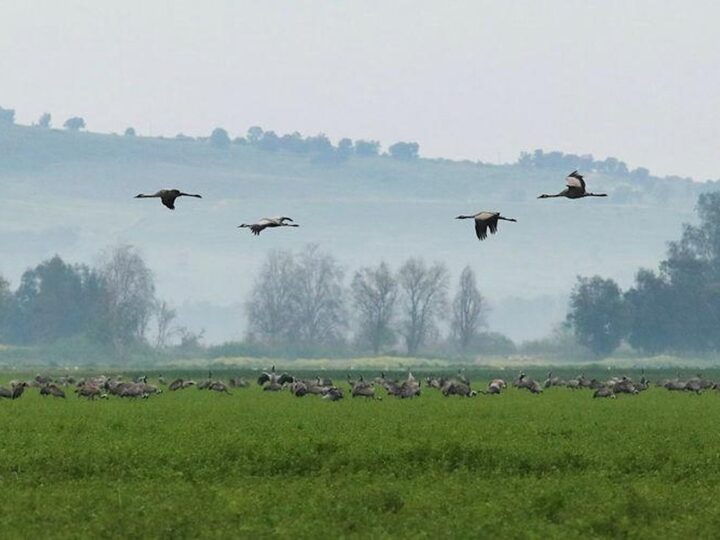About 30 flamingos touched down earlier this month at Agamon-Hula Nature Reserve in northern Israel, painting an optimistic pink picture that autumn is not far away.
Given the heatwave enveloping the country, it’s a very welcome sign, said Inbar Shlomit Rubin, KKL-JNF field manager of the site.
“Though we all feel the hot weather of August, the first migrating birds are already at the lake! Besides the flamingos, we also started to spot different species of herons, hummingbirds, egrets, and many others,” she said.
Agamon-Hula Nature Reserve is one of the most important bird migration routes in the world. Every migration season (fall and spring), over half a billion migratory birds fly over this area. Thousands stay for the entire winter at Hula Lake.
Although the nature park is always crammed with cranes in the fall, flamingos didn’t land here until about 10 years ago.
They nest in Turkey and Iran and their migration route used to take them to and from Africa through countries east of Israel, although they sometimes stopped in the southern city of Eilat on their way.
And then, suddenly, they began landing in Agamon-Hula. Last year, according to KKL, some of the 200 flamingos that arrived stayed all winter. And so did another few hundred that landed in Eilat.

It’s hard for KKL to collect any data about these visiting flamingos. They cannot be tracked through GPS or banding, as many migratory birds are. Israel doesn’t have diplomatic relations with Iran, making cooperation between ornithologists difficult.
“The story of the flamingos is a truly fascinating one,” Rubin told ISRAEL21c last December.
“They still only arrive during migration season in fall and in spring, but they’re suddenly staying for a week or two,” she noted.

“That’s a change in their behavior. In the last few years, we’ve seen many possible reasons for it: climate change, [less] rainfall in Africa, long droughts, changes to agricultural regimes. We have been seeing changes to the migratory routes of birds,” Rubin concluded.















